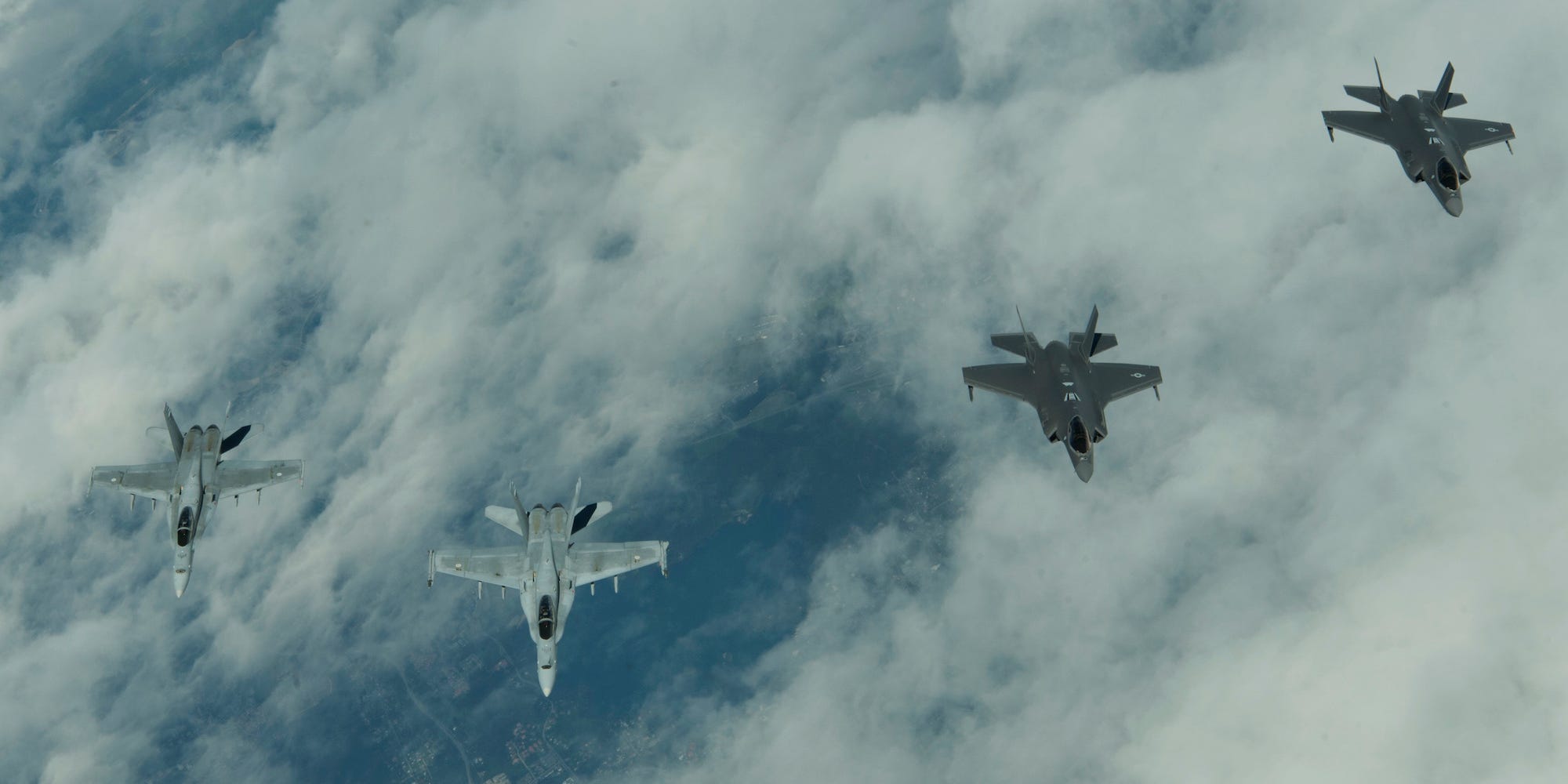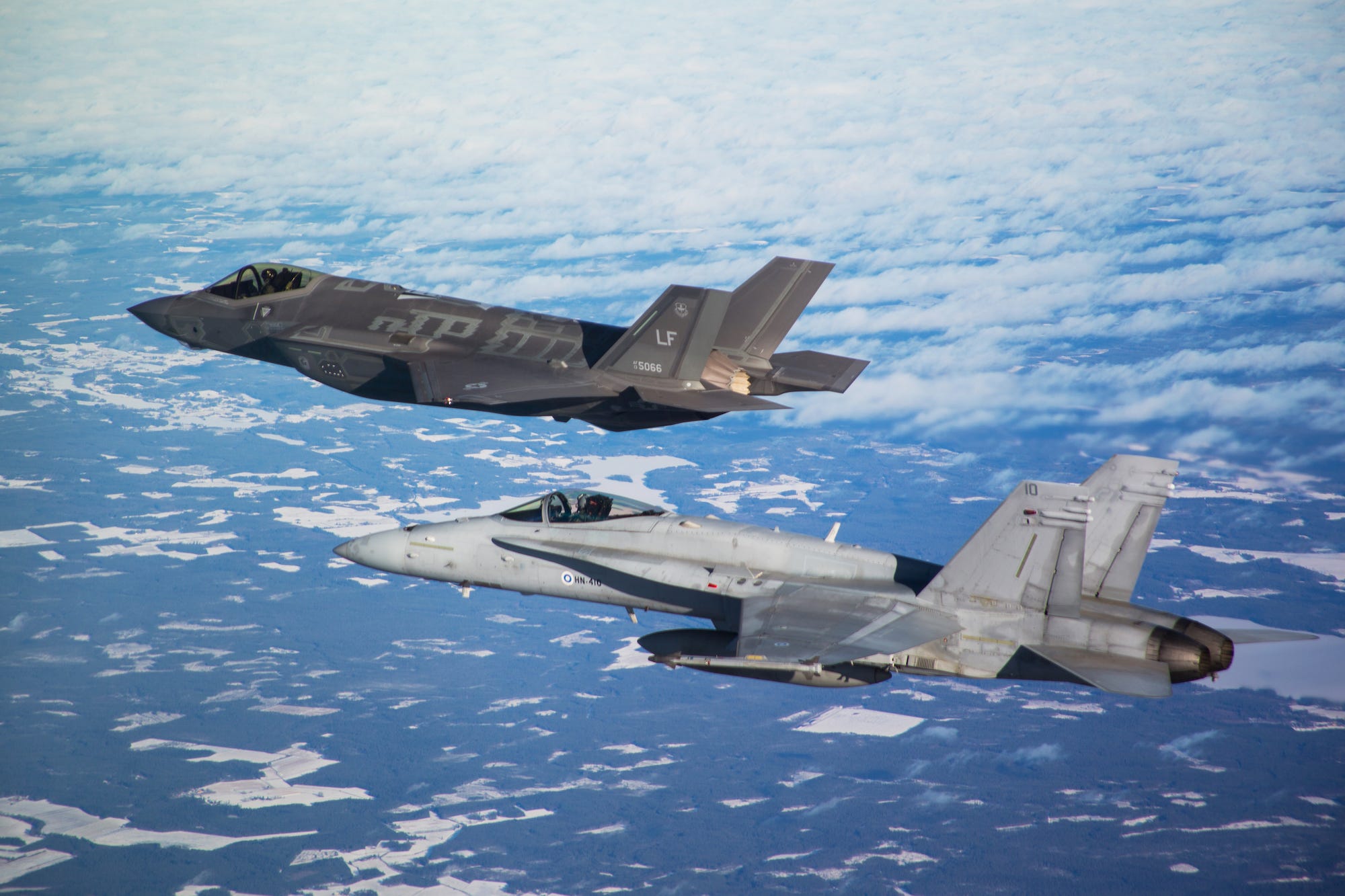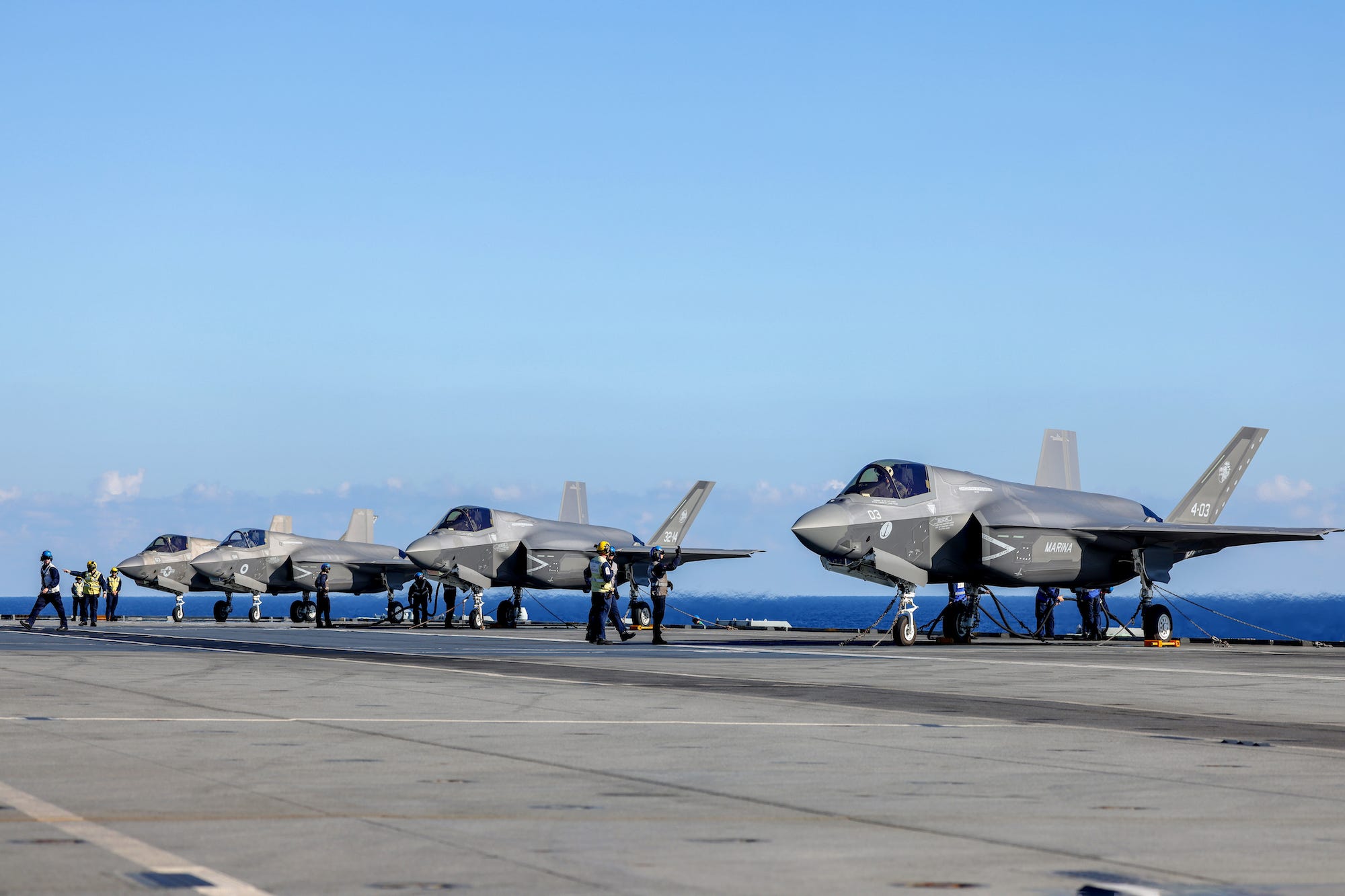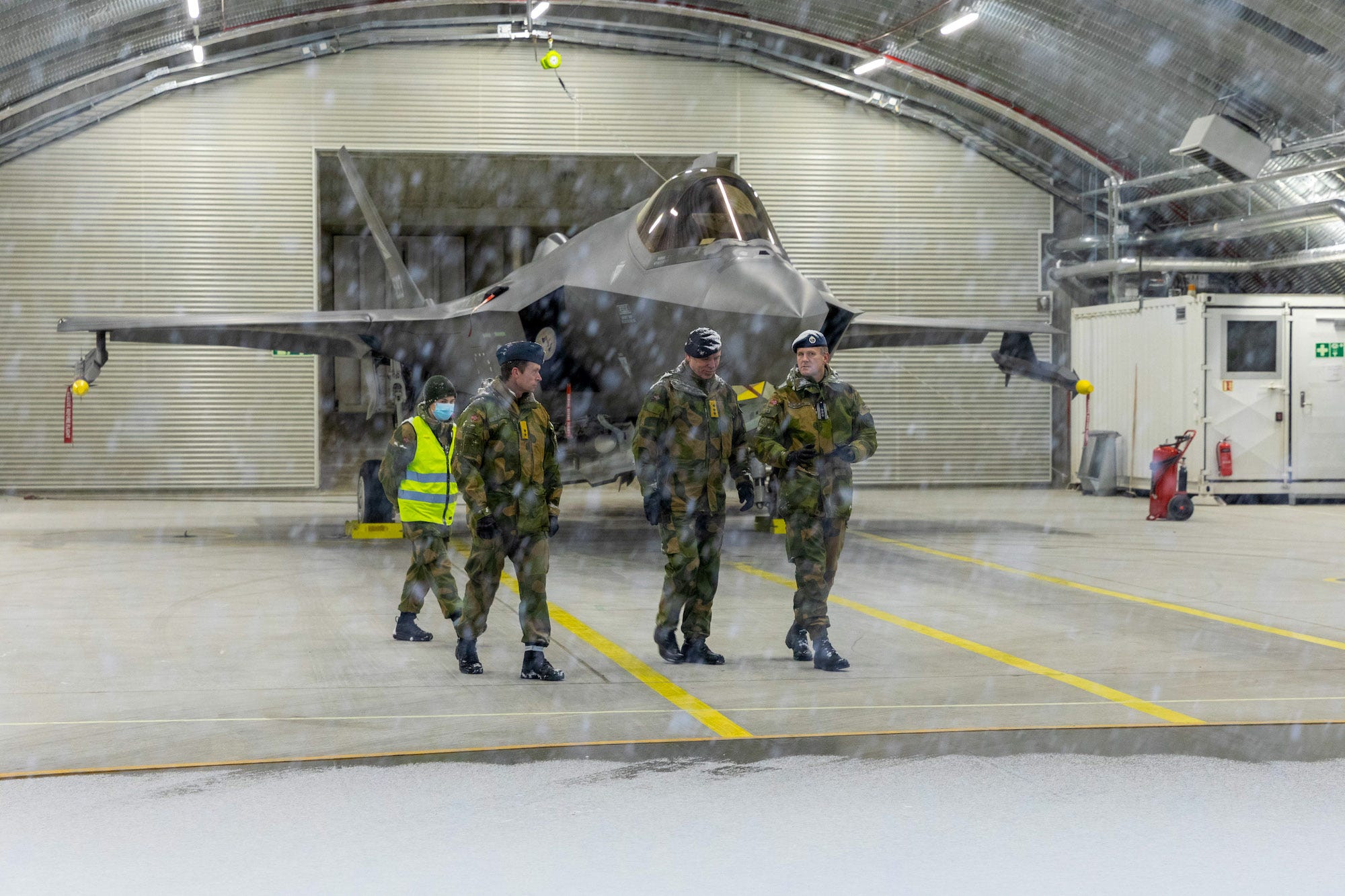
- Finland announced in December that it would buy the F-35, becoming the latest European country to buy the jet.
- Multiple operational factors make the F-35 popular with the US's European partners and allies.
- For many in Europe, choosing the F-35 is as much a geopolitical decision as it is an operational and financial one.
On December 10, Finland announced that it would purchase 64 F-35A Lighting II jets from Lockheed Martin for $11.3 billion to replace its fleet of F/A-18 Hornets.
Although the first F-35s won't arrive until 2026, this is Helsinki's largest military procurement ever and one of the largest in Europe.
Finland is the latest European country to purchase the US-made fifth-generation stealth fighter, and the decision puts it in a growing group of European militaries that use or will use the jet.
The most recent buyer was Switzerland, which announced in June that it would buy 36 F-35As in a $5.5 billion deal and touted the jet's "entirely new, extremely powerful and comprehensively networked systems for protecting and monitoring airspace."
A fine balancing act

Finland has traditionally been non-aligned. It is not a member of NATO, but it cooperates with NATO countries and is a member of the EU. It fought two wars with the Soviet Union in the 20th century but now maintains a working relationship with Russia, with which it shares an 830-mile border.
During a visit to the country in October, NATO Secretary General Jens Stoltenberg said Finland its one of the NATO's closest partners.
"We share the same values. We share the same security challenges, and therefore, it absolutely makes sense that NATO and Finland are working closely together on issues of common importance," Stoltenberg said.
Stoltenberg added that "NATO's door remains open" should Finland decide to apply for membership. However, accession is not particularly popular with the Finnish public and some of its political leaders.
Lightning over Europe

Besides Finland and Switzerland, Belgium, Poland, Denmark, Italy, Norway, the UK, and the Netherlands also operate one or more F-35 variants or are awaiting delivery of the aircraft.
The latter five countries are among the founders of the F-35 program. (Turkey was also a key partner but was kicked out after buying Russia S-400 air-defense system.)
Greece has also expressed interest in Lockheed Martin's cutting-edge aircraft and there are reported talks between the company and Spanish and Czech officials. Further, on February 2, Romanian President Klaus Iohannis expressed his country's intention to buy F-35s.
Multiple operational factors make the F-35 popular with the US's European partners and allies.
The fifth-generation jet is a multirole combat aircraft focusing on air-superiority (air-to-air) and strike (air-to-ground) missions.
The F-35 has a force-multiplier effect, with intelligence, surveillance, and reconnaissance (ISTAR) capabilities that increase the effectiveness of friendly air, naval, and ground units by providing them with valuable battlefield data in real-time. The F-35 has been characterized as "the quarterback of the skies" due to these capabilities.

The F-35's survivability is increased by its stealth profile. The aircraft has internal mounts for its weapons to maintain that profile, but it can be also configured in "Beast Mode," trading stealth for firepower.
In "Beast Mode" the aircraft can carry four 500-pound GBU-12 laser-guided bombs on its wings, two GBU-12 in its internal weapons bay, and an AIM-9 air-to-air heat-seeking missile.
Besides its impressive capabilities, the F-35 is seen as an economical purchase. Often, the cost of the fifth-generation stealth fighter is lower than the cost of fourth-generation aircraft — Switzerland cited price as a factor in its decision.
Nevertheless, the cost of operating and maintaining the aircraft is significant — for example, its stealth coating has to be re-applied after every flight.
An F-35 flight-hour currently costs $36,000, though Lockheed wants to reduce that to $25,000 per flight hour. In comparison, the F-16 cost $22,000 per flight hour.
Additionally, by buying the American fighter, countries can increase their industrial links to the US since their domestic industries often manufacture some of their jets' components.
With an eye to Russia

For many European countries, however, choosing the F-35 is as much a geopolitical decision as it is an operational and financial one, especially given Russian activity in recent years.
Large purchases of cutting-edge equipment like the F-35 often lead to closer cooperation with the US, such as through training for pilots and maintainers. Using the same systems also improves military interoperability with the US.
These factors could act as a deterrent to Russia and led Poland to skip its usual competitive procurement process in order acquire the jet sooner. It is not known how the F-35 would fare against Russia's S-400. (Concern about exposing the jet to that system drove the decision to kick Turkey out of the program.)
Nevertheless, not all the European countries buying the F-35 see the Russian threat the same way.
Finland's chief of defense said in December that he saw no concerning operations in Finland "immediate vicinity" and that there was "no military threat directed at Finland."
Finland has increased its military readiness in recent weeks, with an official saying there was no direct threat but still a risk from ongoing military activity.
"The more military action there is, even if it was just innocent movement, the higher the risk that something happens," the official said.
Constantine Atlamazoglou works on transatlantic and European security. He holds a master's degree on security studies and European affairs from the Fletcher School of Law and Diplomacy.
